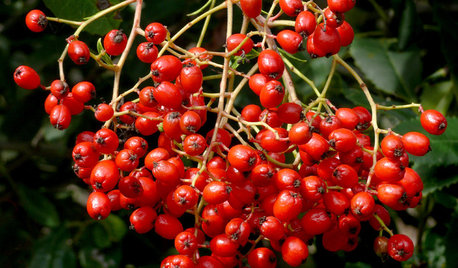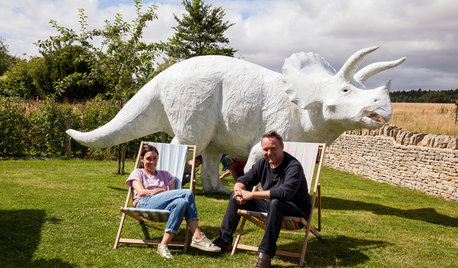How to tell young gametophytes from moss?
mano_verde
19 years ago
Related Stories

ARCHITECTURETell a Story With Design for a More Meaningful Home
Go beyond a home's bones to find the narrative at its heart, for a more rewarding experience
Full Story
MOVINGMaking a Home Away From Home
Feeling like a stranger in a strange land? These tips can help ease the transition after a big move
Full Story
CONTEMPORARY HOMESHouzz Tour: From Anonymous to Outstanding in Georgia
With a striking front porch and a dynamic wood ribbon inside, this Decatur home moves ahead of the curve
Full Story
GARDENING GUIDESWhat Are Your Spring Gardening Plans?
Tearing out the lawn? Planting edibles? Starting from scratch? Tell us what you plan to change in your garden this year
Full Story
GARDENING GUIDESCalifornia Gardener's December Checklist
Let California's version of holly brighten the winter landscape — or consider another holiday performer from the whole host of choices
Full Story
KITCHEN DESIGN10 Smashing Black Kitchens
Looking for something different from an all-white kitchen? Think about going stylishly dark instead
Full Story
COLLECTIONSWorld of Design: 9 Cool Collectors and What They Keep at Home
Meet the people behind some museum-worthy assemblages — from a house of hats in Los Angeles to dinosaur art near London
Full Story
DESIGNER SHOWCASESHollywood Glamour at the 2016 Wattles Mansion Showcase House
Designers take inspiration from their favorite movies and Hollywood icons to decorate rooms for this Southern California show house
Full Story
GARDENING GUIDESGreat Design Plant: Western Sword Fern Adds Prehistoric Drama
For distinctive looks and easy care in a shade garden, go for North American native Polystichum munitum
Full Story
HOUZZ TOURSHouzz Tour: Just What Mom Wanted, Off the Washington Coast
With an art studio, age-in-place features and a view-maximizing design, this home shows just how well the architect knows his client
Full StorySponsored






Iris GW
paalexan
Related Professionals
Birmingham Landscape Architects & Landscape Designers · Lake Oswego Landscape Architects & Landscape Designers · Salem Landscape Contractors · El Mirage Landscape Contractors · Kaysville Landscape Contractors · Lebanon Landscape Contractors · National City Landscape Contractors · North Richland Hills Landscape Contractors · Old Saybrook Landscape Contractors · Sammamish Landscape Contractors · Tamarac Landscape Contractors · West Chicago Landscape Contractors · Austin Roofing & Gutters · Arbutus Decks, Patios & Outdoor Enclosures · Kalamazoo Decks, Patios & Outdoor Enclosuresmano_verdeOriginal Author
mano_verdeOriginal Author